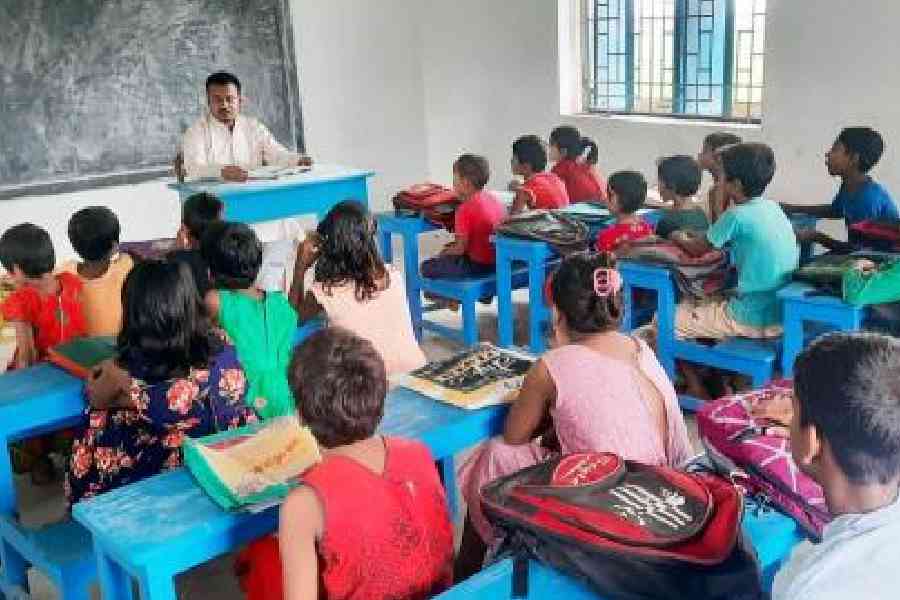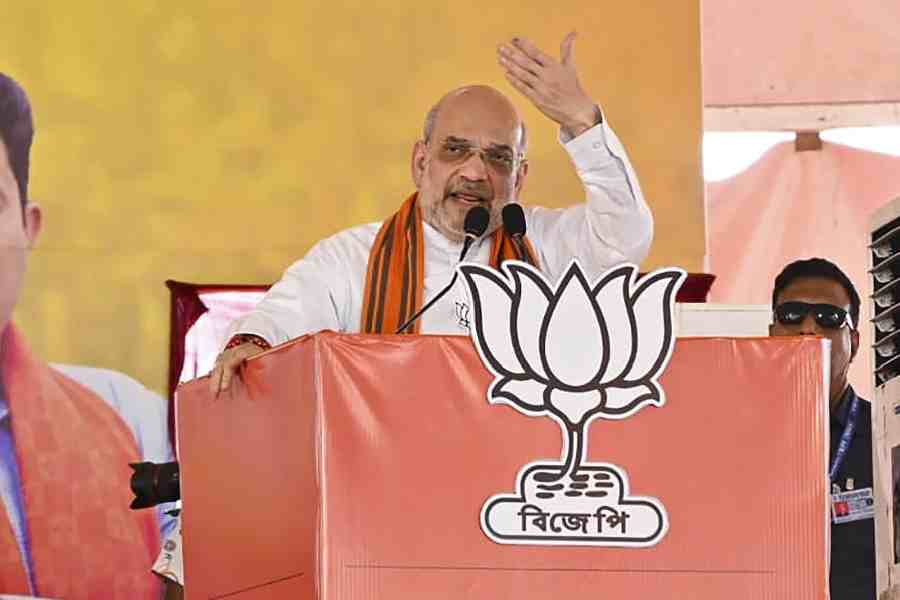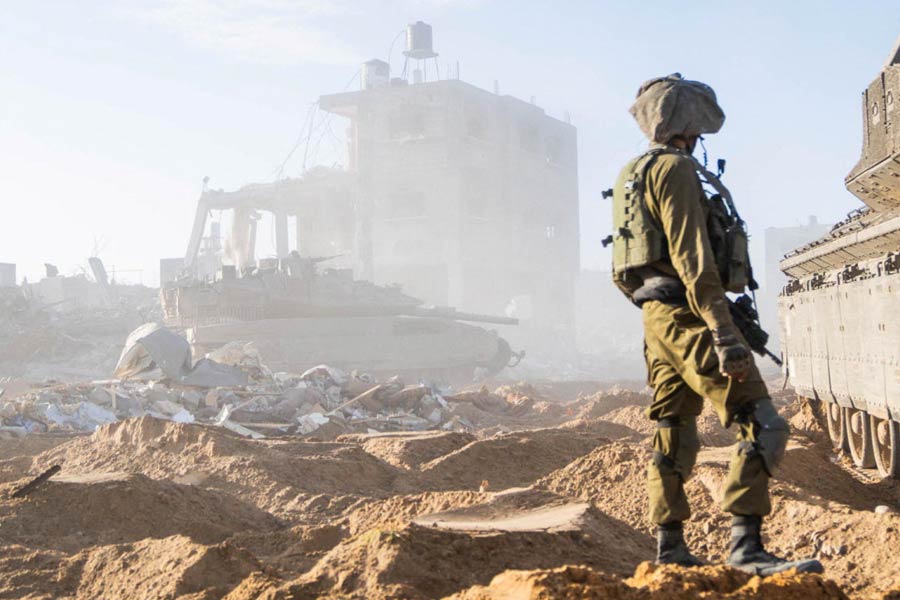Babar Ali’s story is much like a modern-day fairy tale — too good to be true. The story, told and retold several times over, is now a part of many books and documentaries.
It goes like this: a nine-year-old schoolboy started a free school in the backyard of his family home in a remote village of West Bengal. As he grew up, his open-air school grew bigger and bigger until it turned into the three-storey Ananda Siksha Niketan. When he was 16, he earned the epithet “youngest headmaster in the world”. Eventually, he completed a double master’s, in English and history, and formally took over as the school’s headmaster.
When I met Babar last month, he had been on a whirlwind tour across Calcutta and the suburbs. Not yet 30, he’s collected scores of awards and accolades. Recently, a Hollywood production house finished the recce for a biopic on him. Hollywood actor Angelina Jolie expressed her desire to work with him “to educate and inspire others about the importance of child rights”. Babar shows me the note.
Bhabta is a roadside station just 12 kilometres from Berhampore, the district headquarters of Murshidabad. Babar’s village, Shankarpara, is a short walk from the station. The village is so poor that most parents are reluctant to send their children to school; they see it as a waste of resources.
Babar was “privileged” in that his parents happily sent him to Beldanga C.R.G.S. High School 10 kilometres away. He travelled eight kilometres in a bus or an auto rickshaw and covered the rest of the dirt track on foot. “My parents understood the value of education,” he says. “When I came back from school at 4 every afternoon, I would feel bad for the boys and girls who missed school or any kind of education,” he adds.
And that is how a precocious Babar decided to start a school for children younger than him under a guava tree. All he had was a broken blackboard and some used pieces of chalk. Even getting the broken chalk was not easy for the nine-year-old teacher. He had to implore and convince his class teacher Baijayanti Tewari for those. The 76-year-old says, “When I heard he was running a school, I was at first amused.”
The oldest photograph of Babar in his open-air school shows a frail young boy seated on a chair, an exercise book in hand and some toddlers sitting around him.
Babar had to persuade parents to send their children to his school for a few hours every afternoon. The school would start somewhat late in the day, only after Babar returned from school. Initially, his father was sceptical about his unusual venture but Babar’s teachers assured him that the effort would help the boy learn better and nurture his leadership skills.
As news about the school spread, many teachers, heads of institutions, local administrators and politicians came forward to lend support. First, the school got an overhead shed and some benches. The headmaster of the neighbouring Sargachi R.K. Mission named the school Ananda Shiksha Niketan or the home of joyful learning.
Firoza Begum, founder-headmistress of Pulinda Girls’ High School, has remained a firm supporter of Babar through the years. During her tenure as MLA of Raninagar in Murshidabad, she helped him in many ways.
No matter how noble his mission, Babar faced many challenges. Firoza Begum says, “There were fundamentalists and the orthodox set who opposed his effort to educate girls. Despite the resistance, today 60 per cent of students in the school are girls.”
There were other challenges. Sabuj Baran Sarkar, the then sub-divisional officer at Beldanga, remembers how Babar was vilified by a section, he even received death threats. “I had to organise police protection for him and his family,” says Sarkar. The district magistrate had to intervene to help Babar expand his school. Babar also got support from Buddhadeb Bhattacharya, who was then chief minister of West Bengal.
Many donors came forward to help him buy a piece of land and build the school beside a paddy field. There were others who made donations for school uniforms, bags and some dry food for the children. Many of these people were from Bangalore.
Mitali Chowdhury, who is former headmistress of a nearby school, says, “It’s a pity that Babar gets more adulation from outsiders than those in his village.”
Today Babar’s school has 400 regular students. All his award money is pumped into this institution, which offers free education to boys and girls. The school building has 10 classrooms, a library, a computer laboratory and so on. It is affiliated to the state board. So far 8,000 students have graduated from this school. “Out of the 10 teaching staff, six are former students. All of them are either graduates or postgraduates,” says Babar. “We pay modest honorariums to our teachers,” he adds.
Babar now wants to open free schools across the country. “Several individuals and organisations have invited me to open more schools modelled on Ananda Siksha Niketan,” he says.
So the fairy tale continues.The book Babar Ali’s School by Anne Sibley O’Brien opens thus: “This is a story about a boy with a big idea...”










